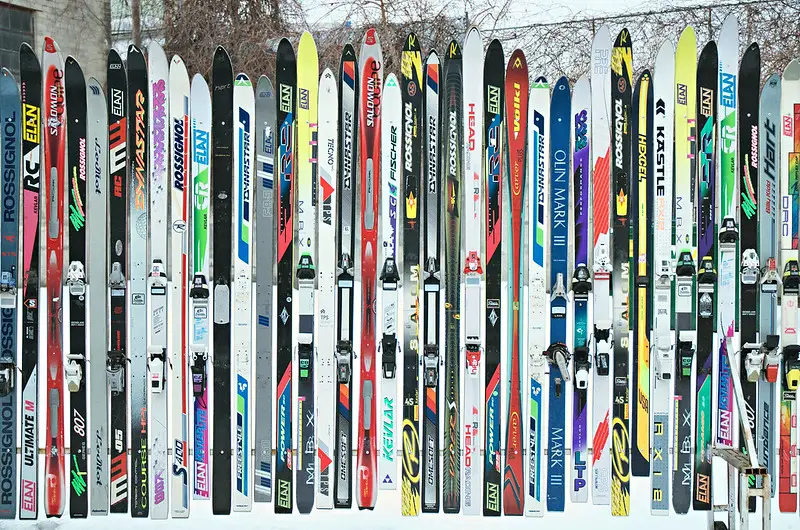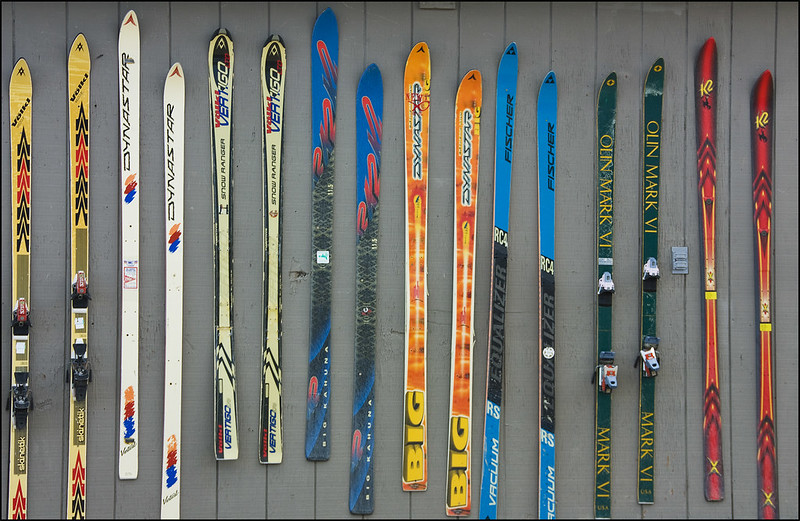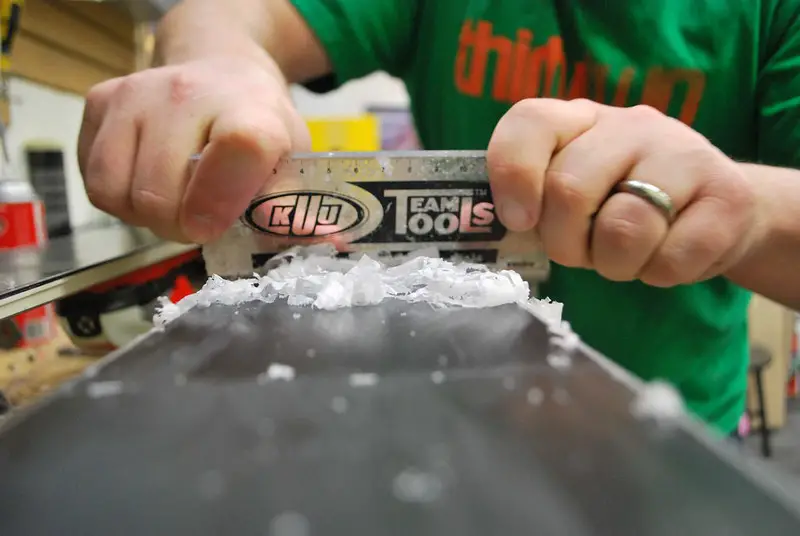Skiing can be an exhilarating and enjoyable activity, but it’s not without its challenges. One of the most significant challenges is dealing with changing snow conditions, especially when the slopes become rocky or have thin snow coverage. This is where rock skis come in handy.
Rock skis are designed to withstand harsh conditions and protect your regular skis from damage. However, not all are created equal, and choosing the right one can be a daunting task.
This is a comprehensive guide on rock skis, including factors to consider when choosing, types available, maintenance and care, tips for using them, and when it’s time to upgrade. By the end of this guide, you’ll be equipped with the knowledge to choose the best pair for your needs and enjoy skiing even in the toughest conditions.

Factors to Consider When Choosing Rock Skis
Choosing the right rock skis is critical to ensure that you have the best skiing experience possible.
Snow Conditions
When selecting, there are several factors you need to consider. Firstly, the type of snow conditions you’ll be skiing in is crucial.
Hard Pack Snow – For hard pack snow, you’ll want skis with a stiffer flex and sharp edges to ensure better control.
Powder Snow – For powder snow, skis with a wider surface area will provide better floatation.
Wet Snow – Wet snow requires skis with a softer flex to prevent them from sticking, while icy conditions require skis with a harder flex to provide a better grip.
Ski Length
Secondly, ski length is also an essential consideration.
Shorter Skis – Ideal for maneuverability in the bumps and maintaining precise control at slower speeds.
Longer Skis – Offer greater speed and stability, less ideal for navigating rocky terrain and thin early-season snow.
Ski Width
Finally, ski width is another crucial factor. Narrow skis are better suited for hard-pack snow, while wider skis are ideal for powder snow. The width of your rock skis will depend on your skiing ability and the conditions you’ll be skiing in.
Narrow Skis – are better suited for hard-pack snow when edge grip is crucial to maintain control on icy and hard surfaces.
Wide Skis – best used for powder snow after a fresh snowfall when you need the flotation but rocks can be lurking underneath.

Types of Rock Skis
There are several types of rock skis available, each with its own set of advantages and disadvantages.
Old Skis
One of the most common types of rock skis is old skis. These are skis that you no longer use for regular skiing and have been repurposed.
The advantage of old skis is that they’re readily available and don’t require any financial investment. However, they may not be suitable for the current snow conditions and may be outdated in terms of technology.
Used Skis
Another option for rock skis is used skis, which are usually available at a lower price than new skis and can be found in good condition.
However, it’s essential to be careful when choosing used skis to ensure that they’re not damaged or worn out.
Cheap Skis
Finally, there are cheap skis, which are designed for beginners and are affordable, making them an excellent option for rock skis.
However, they may not be as durable as more expensive skis and may need to be replaced more frequently.

Maintenance and Care
Maintaining and caring for your rock skis is crucial for their longevity and optimal performance. The following steps can help you keep your skis in top condition:
Preparing the Skis
Before hitting the slopes, it’s important to prepare your rock skis. Remove any dirt or debris from the skis, check the edges for damage, and ensure that they’re properly waxed.
Base Cleaning: After each use, clean the bases of your skis using a soft cloth or a special base cleaner. This helps remove any dirt, grime, or contaminants that can damage the skis.
Edge Maintenance: Inspect the edges of your skis regularly for damage or dullness. If necessary, use a diamond file or sharpening tool to restore the edges to their optimal sharpness.
Waxing: Waxing your skis helps protect the bases and provide a smooth glide. Apply wax to the bases using a ski wax iron, then use a plastic scraper to remove the excess wax.
After Use Maintenance
After each use, wipe down the skis with a soft cloth to remove any dirt, moisture, or snow. This helps prevent rust and warping.
Drying: It’s essential to dry your skis thoroughly before storing them. Use a dry cloth to remove any excess moisture, and allow them to air dry for a few hours.
Storage: Store your rock skis in a cool, dry place, away from direct sunlight or heat sources. Use a ski rack or a wall-mounted storage system to keep them organized and prevent warping.
Regular Maintenance: Regularly inspect your skis for any signs of damage or wear and tear. If you notice any issues, have them repaired by a professional before using them again. By following these maintenance and care tips, you can extend the lifespan of your rock skis and ensure a better skiing experience.
Tips for Using Rock Skis
Using rock skis requires a slightly different approach than regular skiing, especially if you’re skiing on hard-packed or icy terrain. Here are some tips to help you make the most of your skis.
Adjusting to Different Conditions
Rock skis are designed to handle different snow conditions, but it’s essential to adjust your technique to match the terrain. Be prepared to adjust your speed, turning, and body position to adapt to the changing conditions.
Body Position – Maintaining a balanced and centered body position is critical for skiing on rock skis. Keep your weight evenly distributed between your feet, and avoid leaning too far forward or backward.
Speed Control – Controlling your speed is crucial for skiing safely and effectively on rock skis. Use a combination of turning, edging, and pressure to control your speed and maintain stability.
Turning – Rock skis are typically shorter and wider than regular skis, which can make turning easier. Use your edges to initiate turns and maintain control.
Be Aware of the Limitations
Rock skis have some limitations, especially when it comes to speed, stability, and ability to take on steep slopes. Be aware of these limitations and adjust your skiing accordingly.
Speed – Rock skis should not be used to travel at high speeds since they can be unstable from base scarring and jagged edges.
Stability – Be aware that rock skis are less stable due to wear and tear on edges and the bases from hitting rocks and other objects.
Ability to Take on Steep Slopes – Rock skis can take on steep slopes, just be sure to check your speed and maintain stability.
Rock skis can be a lot of fun to use, especially if you’re looking to try something new. Jumping, skiing in the trees, and mogul skiing are just a few ways to make the most of your pair.
When to Upgrade from Rock Skis
Rock skis are designed to handle tough conditions and protect your regular skis from damage, but they do have limitations. If you find yourself skiing more frequently on rock skis than on regular skis, it might be time to consider upgrading.
As your skiing skills improve, you may find that they no longer provide the stability, performance, or versatility that you need. Additionally, if your skis have sustained significant damage or wear and tear, it might be more cost-effective to upgrade to a new pair.
Finally, if you’re looking for a more specific type of ski, such as a powder ski or a race ski, it may be time to upgrade. Ultimately, the decision to upgrade depends on your skiing needs, skills, and preferences.
Essential Tool for Skiers
Rock skis are an essential tool for any skier looking to protect their regular skis from damage and perform in challenging conditions. When choosing a pair, it’s important to consider factors such as snow conditions, ski length, and ski width to ensure you get the right pair for your needs.
Additionally, proper maintenance and care, such as base cleaning, edge maintenance, waxing, and storage, can help extend their life. By following the tips, including adjusting to different conditions, maintaining proper body position, controlling speed, turning, and being aware of the limitations, you can enjoy the unique experience that these skis offer.
Finally, knowing when to upgrade, such as when you’re skiing more frequently on them or when your needs have changed, can help you maximize your performance and enjoyment on the slopes. So, whether you’re skiing on hard-packed snow, powder, or in the trees, rock skis are a versatile and essential tool for any skier.

